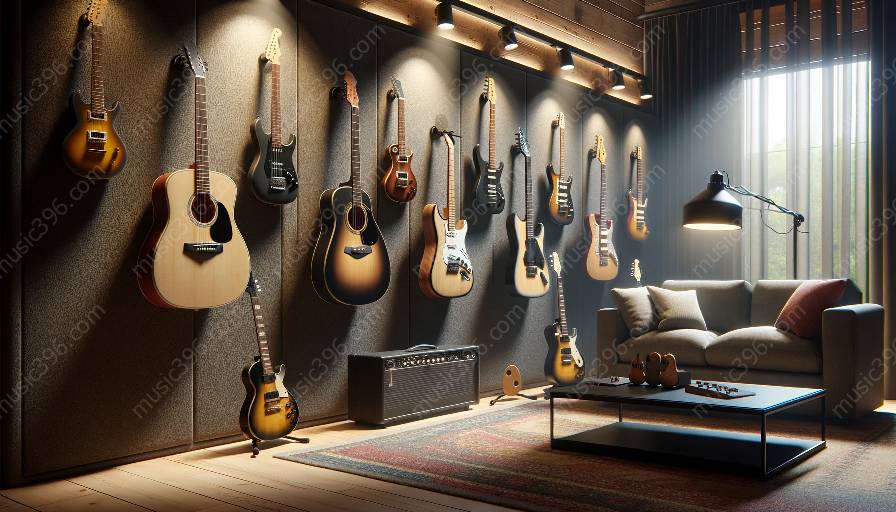Guitars are not just musical instruments; they are marvels of engineering, each carefully crafted to produce a unique sound and provide an enjoyable playing experience. The construction and materials used in a guitar significantly influence its sound and playability. Understanding how these elements interact and how technological advancements in music equipment have shaped guitar production is crucial to appreciating the musical instrument's evolution.
Construction and Guitar Sound
The construction of a guitar, including its shape, bracing, and joinery, directly impacts the instrument's sound. Acoustic guitars, for example, are often made with different types of tops – spruce, cedar, or mahogany – each affecting the tonal quality. The type of bracing underneath the top can also influence the guitar's resonance and projection. Additionally, the way the neck and body are joined can affect the sustain and overall sound of the guitar.
- Top Material: The material of the top directly affects the tone of an acoustic guitar. Spruce tops are commonly used for their balanced and versatile sound, while cedar tops are known for a warmer and darker tone. Mahogany tops produce a strong, punchy sound ideal for blues and folk music.
- Bracing: The bracing pattern under the top significantly impacts the guitar's resonance and tonal characteristics. X-bracing, for example, is known for enhancing volume and bass, while fan bracing can produce a more balanced tonal response.
- Neck-body Joinery: The connection between the neck and body can affect sustain and resonance. Set necks, where the neck is glued into a pocket on the body, often provide better sustain and resonance compared to bolt-on necks.
Materials and Playability
When it comes to playability, the materials used in a guitar greatly influence the instrument's comfort, durability, and ease of play. Factors such as neck profile, fretboard material, and body shape all contribute to the playability of a guitar.
- Neck Profile: The shape and thickness of the neck significantly affect how comfortable a guitar feels to play. Slim neck profiles are often preferred for faster playing styles, while thicker necks can provide more support and stability.
- Fretboard Material: The material of the fretboard can impact playability and tone. Rosewood fretboards are known for their warm tone and smooth feel, while maple fretboards offer a brighter sound and a slicker playing surface.
- Body Shape: The overall shape and size of the guitar can affect playability. For example, smaller-bodied guitars may be more comfortable for players with smaller hands, while larger-bodied guitars may provide more resonance and volume.
Technological Advancements in Guitar Production
Advancements in music equipment and technology have revolutionized the way guitars are designed, built, and played. From the development of new tonewoods to the integration of electronic components, technology continues to impact the construction and playability of guitars.
- Composite Materials: The use of carbon fiber and other composite materials has allowed for the creation of lightweight, durable, and resonant guitar components that were previously impossible with traditional materials.
- Electronic Components: The incorporation of pickups, preamps, and onboard effects has expanded the sonic capabilities of guitars, offering players a wider range of tones and effects without relying on external amplification or pedals.
- CAD/CAM Technology: Computer-aided design (CAD) and computer-aided manufacturing (CAM) have streamlined the production process, allowing for greater precision and consistency in guitar construction.
The Future of Guitar Construction and Technology
As technology continues to evolve, the future of guitar construction holds exciting possibilities. Innovations in 3D printing, sustainable materials, and digital signal processing are poised to further transform the sound and playability of guitars, ensuring that this beloved instrument continues to adapt and thrive in the modern musical landscape.
Understanding the intricate relationship between construction, materials, and technology is essential for both guitar enthusiasts and aspiring luthiers. By appreciating the impact of these elements, one can gain a deeper appreciation for the craftsmanship and innovation that drive the art of guitar making.























































